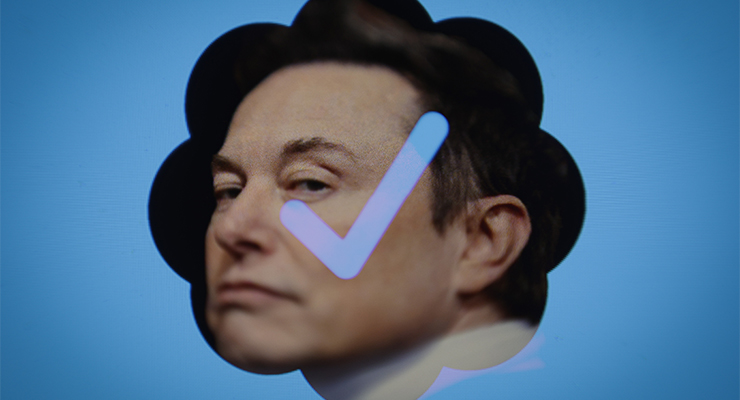
Content Corner
In 2019, a Twitter user called @maplecocaine captured an important truth about the platform.
“Each day on Twitter there is one main character. The goal is to never be it”, they tweeted.
For those not familiar with the platform, being the “one main character” describes the moment when a Twitter user goes viral for the wrong reasons — typically for tweeting something ill-advised.
There are some people who revel in this attention. One example is MAGA-touting Nick Adams, who has been making a concerted effort recently to tweet troll statements — “The Los Angeles Lakers are better WITHOUT LeBron James in the lineup, this is a fact” was a recent egregious one — so that the people making fun of him will share his content further. (Believe it or not, the Trump-supporting, America-loving, Hooters-adoring buffoon is a former young Liberal who boasted about being the youngest deputy mayor in Australia and proposed killing all pigeons in his council area.)
Another is Elon Musk. His purchase of Twitter has gone poorly so far. He fired thousands of employees, before asking some to come back. He gave remaining staff an ultimatum between committing to “hardcore” Twitter or leaving, and then later walked back some of his demands. New features rolled out then rolled back. The platform itself is increasingly glitchy. Advertisers have fled in droves.
It has made Musk into Twitter’s permanent main character, which, in my opinion, has always been his motivation for buying it. Much like a certain former US president, the world’s richest man routinely announces decisions or thrashes out ideas about the platform on the platform. Other people use Twitter to dunk on him for his many follies. Journalists are using Twitter to livetweet the platform falling apart. It’s all very meta.
Like Trump before him, Musk knows that being at the centre of Twitter is a shortcut to being at the centre of culture. Despite only having a few hundred million users — fewer than Pinterest! — the platform’s concentration of public figures and media means it drives the world’s attention even if the majority of the world isn’t on there.
The Tesla and SpaceX CEO has used the platform to help cultivate the mythos of him as a genius visionary memelord. Now, Musk’s Twitter purchase means his place on Twitter is untouchable, he can mould his favourite platform to his liking, and it cements him as seemingly the only topic of discussion on the website.
Musk may yet turn Twitter around, but all evidence so far suggests that’s unlikely. It’s fitting that a monster of Twitter’s own creation would be responsible for the company’s possible demise. Part of the seductive power of Twitter is it entices people to weigh in on every topic beyond their expertise. But unlike most of us, a multi-billionaire can decide to turn their tweets of how to “fix Twitter” into reality.
Hyperlinks
Fake Twitter accounts abuse Adani critics and spread pro-fossil-fuel content
One of the problems of cutting 75% of your workforce is there’s no one left to tell when seemingly discovering a network of bots trying to spread pro-fossil-fuel narratives on your platform. (Crikey)
Imperfect match: Australian renters in the dark over use of data by tech company Snug
Introducing black-box algorithms into decision-making on things such as rental applications can hide the fact that there may be illegal discrimination happening and that there’s not much we can do to prove it! (The Guardian)
Feed frenzy: How your local candidate is all up in your socials
A good look at the use of digital advertising in the Victorian state election. (The Age)
Pot stock Creso Pharma chairman exits after wild TikTok spectacle
I find it hard to even summarise this beyond saying “wild”. (AFR)
‘Your Aussie friend and Trumpette!’: Gina Rinehart is an active member of Donald Trump’s female fan club
I really enjoyed reading through the Trumpettes’ online presence — including letters written by Australia’s richest person! — and I guess you might too. (Crikey)
Content Corner
By now, you’ll no doubt have heard about the migration to Mastodon, an open-source social media platform with similarities to Twitter.
The major difference between Mastodon and Twitter is that rather than everyone existing on the same servers run by the platform, users sign up for individual, decentralised servers (or, in it lingo, “instances”) that join together.
These instances can be run by anyone and come with their own rules and community members. Think of Mastodon instances like email providers: you sign up for one, use them to interact with people on other servers, but are ultimately under the rule of whoever’s server you’re using.
Twitter users have joined different Mastodon instances, tried to acquaint themselves with the platform, and in some cases butted up against some of the norms established by an existing user base.
What’s that like? I asked Deborah Pickett, a moderator from the popular Australian server aus.social, who seems exhausted by the influx.
“It’s like being in a sleepy seaside village, and then a busload of tourists arrives. Then another sixty busloads. They’re loud, they’re trying to find their friends on the other buses, and though we asked them, as a group, and individually, to please not step on the flower beds, they did it anyway,” she said in an email.
Pickett is talking about the rules of aus.social, some of which might seem foreign to those coming from Twitter’s free-for-all. For example, aus.social users aren’t supposed to screenshot and share another user’s post without permission, even if it’s a public post.
Failing to abide by these rules has consequences. Not just for users but also other instances. Mastodon is set up to allow moderators to “defederate” from other instances, meaning users on your server won’t see that other server’s posts. One group who’ve come a cropper of these rules? A server set up just for journalists has been banned by many other instances.
This might all sound complicated and strange, but it’s also part and parcel of Mastodon’s slightly different approach to being a social network. Unlike Twitter, where you’re thrown into the arena with everyone else, Mastodon attempts a balance, allowing people to curate their own online communities while also being able to connect with others.
Managing a community is no easy feat at the best of times. And with a rush of new users coming in, Pickett notes, they also have a say in setting the direction of the online space.
“Now, after three (it’s only three!) weeks, some of them have built their own homes in the village, and they’re helping to welcome the next four hundred busloads of tourists,” she said.
That’s it for WebCam this week! I’ll be back in two weeks. In the meantime, you can find more of my writing here. And if you have any tips or story ideas, here are a few ways you can get in touch.








I remember IRC (Internet Relay Chat), the prototype Social Media. It was run on distributed servers with no-one or nothing in charge. It was eventually bled to death by the sheer of number of babbling users, spammers, grifters, trolls, paedophiles and people injecting malignant HTML. Like what has happened to most SM since despite moderation or the pretense of moderation. Godwin’s Law has validity.
Musk is destroying his own mythos tweet by tweet. In my opinion he comes across as an immature spoiled 15 y.o.
Twitter is now troll heaven. I saw a single tweet from a woman with 90% misogynist replies including one “The boys are back”, revelling in the misogyny.
I believe Musk’s reputation is toast. Twitter’s certainly is.
TWITT not Twitter.